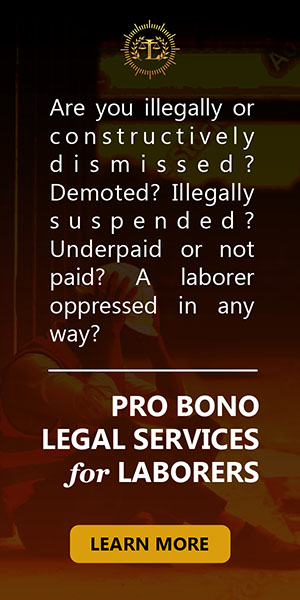What are the tests to determine whether a dispute constitutes an intra-corporate controversy and dispute?
How would jurisdiction be determined?
1. Relationship Test; and
2. Nature of the Controversy Test.
Jurisdiction should be determined by considering not only the status or relationship of the parties, but also of the nature of the question under controversy. This two-tier test was adopted in the case of Speed Distribution, Inc. vs. Court of Appeals: “To determine whether a case involves an intra-corporate controversy, and is to be heard and decided by the branches of the RTC specifically designated by the Court to try and decide such cases, two elements must concur:
1. the status or relationship of the parties (relationship test); and
2. the nature of the question that is subject of the controversy (nature of the controversy test).
The first element requires that the controversy must arise out of intracorporate partnership relations between any or all of the parties and the corporation, partnership, or association of which they are stockholders, members, or associates, respectively; and between such corporation, partnership, or association and the State insofar as it concerns their individual franchises.
The Second element requires that the dispute among the parties be intrinsically connected with the regulation of the corporation. If the nature of the controversy involves matters that are purely civil in character, necessarily, the case does not involve an intra-corporate controversy. (Reyes vs. Zenith Insurance Corp., G.R. No. 165744, August 11, 2008, [Brion, J.])
What is meant by the Relationship Test?
Initially, the main consideration in determining whether a dispute constitutes an intra-corporate controversy was limited to a consideration of the intra-corporate relationship (also known as the Relationship Test) existing between or among parties. The types of relationships embraced under Section 5(b), as declared in the case of Union Glass & Container Corp. vs. SEC, were as follows:
1. Between the corporation, partnership, or association and the public;
2. Between the corporation, partnership, or association and its stockholders, partners, members or officers;
3. Between the corporation, partnership, or association and the State as far as its franchise, permit or license to operate is concerned; and
4. Among the stockholder, partners, or associates themselves. (Reyes vs. Zenith Insurance Corp., G.R. No. 165744, August 11, 2008, [Brion, J.])
What is meant by the Nature of the Controversy Test?
Under the nature of the controversy test, the incidents of that relationship must also be considered for the purpose of ascertaining whether the controversy itself is intra-corporate. The controversy must not only be rooted in the existence of an intra-corporate relationship, but must pertain to the enforcement of the parties’ correlative rights and obligations under the Corporation Code and the internal and intra-corporate regulatory rules of the corporation. If the relationship and its incidents are merely incidental to the controversy or if there will still be conflict even if the relationship does not exist, then no intra- corporate controversy exists. (Reyes vs. Zenith Insurance Corp., G.R. No. 165744, August 11, 2008, [Brion, J.])



 Spotify
Spotify  iTunes
iTunes  AppleMusic
AppleMusic  YouTube
YouTube 


